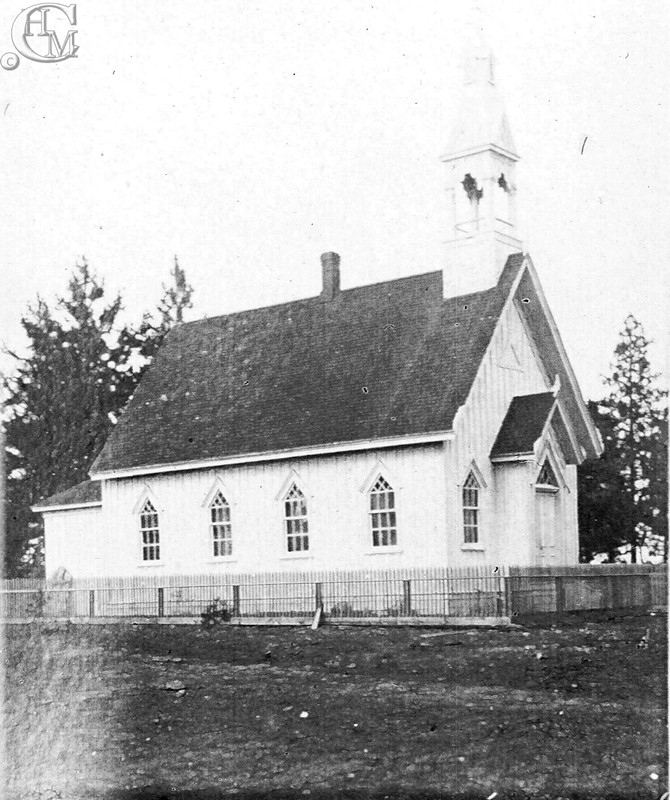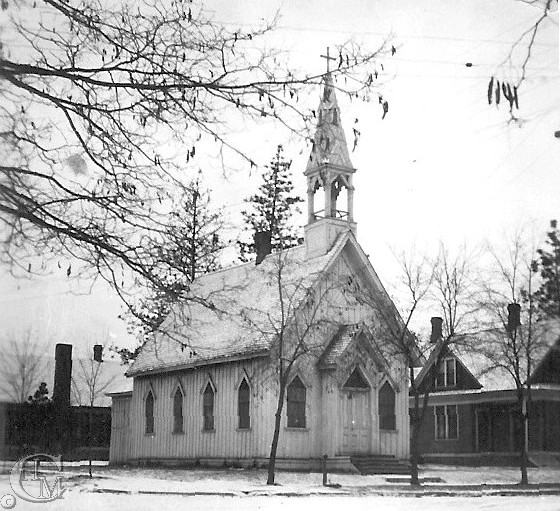1881 Catholic Church
Introduction
Text-to-speech Audio
Images
I remember the old pot-bellied stove with the pews on either side, and we stayed as close to it in the winter as we could! - Catherine Walker

When we made our First Communion, it was a two hour trip from near Marshall to Cheney, a distance of six miles. The work horses could not travel very fast so it took considerable time - Marcel Oriard

Backstory and Context
Text-to-speech Audio
On June 12, 1881, Father Pascal Tosi celebrated the first Mass in Cheney in a hall above a store downtown. Under the direction of Father Joseph Giorda, a 20 by 30 by 14 foot building was completed by September 1881, at a cost of $1,200 on the northeast corner of 5th & C Streets. Two lots for the building were purchased from the Northern Pacific Railway Company for $25. Parishioners raised all of the funds for the building.
It was constructed of boards 10 to 12 inches wide, running vertically, which came from a small mill operating at the edge of town. The little mission style church was kept whitewashed throughout the year. A potbellied stove provided the only heat, and the pews were arranged on either side of the stove. In a letter to friends in France, 1884, Father Louis Ruellan wrote that he had said Mass in Cheney, "where Catholics, good and bad, a dozen families, have a wooden church, alleged Gothic. Quite becoming on the outside, but absolutely bare on the inside."
Not until 1896 was there a resident priest at Cheney, Father M.J. Forhan was assigned to St. Rose of Lima Parish and to care for the Missions in the area.
The Cheney Sentinel newspaper, on November 23, 1900, reported that Father F.A. Faust had purchased a 500 pound bell, “which will be blessed in December, the weather permitting.” This same bell, decorates the exterior grounds of the present St. Rose church on North 5th Street.
A pump-type organ provided music. For many years during the early 1900s, one woman was the organist and soloist – Mrs. Margaret Mulligan Martin, the wife of Clarence D. Martin, owner of the flour mill and later, Governor of Washington.
Sources
First Church of St Rose
Cheney Sentinel
